Define Our Future
28 June 2024
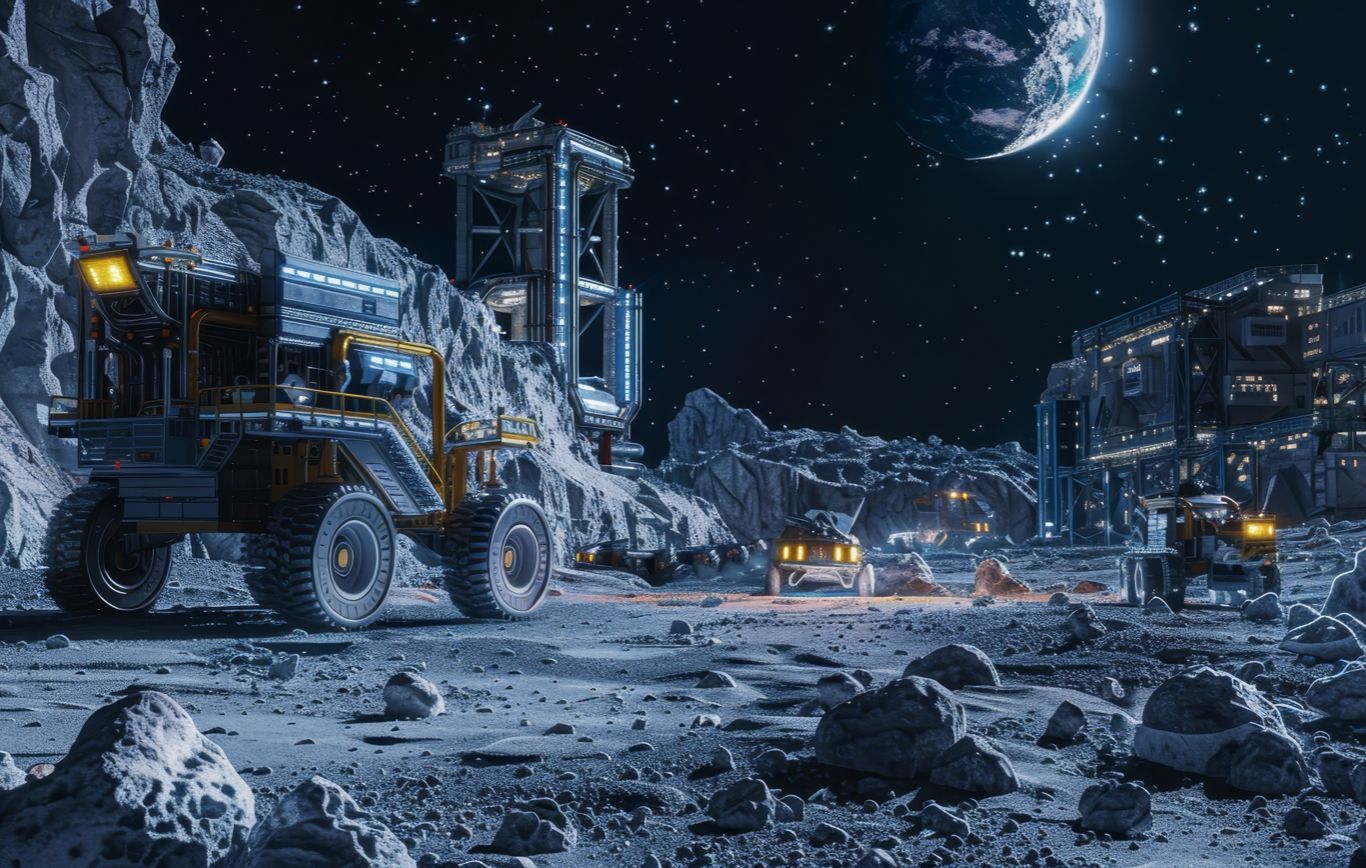
(Image: Adobe)
On June 25th China’s Chang’e-6 mission successfully delivered lunar samples from the far-side of the Moon for the first time. The re-entry capsule landed in inner Mongolia, carrying around 2 kilos of lunar material, marking the end of a 53-day mission involving four spacecraft; an orbiter, lander, ascent vehicle and reentry capsule. According to Long Xiao, a Planetary geoscientist for China University of Geosciences in Wuhan, the samples are “crucial for revealing the moon’s geological history.”
With this mission, China has further solidified its leading role in lunar exploration and demonstrated its cooperative leadership in space, collaborating with partners from France, the European Space Agency (ESA), and Pakistan.
The mission will be followed by Chang’e-7 and 8 (in 2026 and 2028 respectively), with the latter being used to explore in-situ resource utilisation technologies (ISRU), an essential tool for building their anticipated International Lunar Research Station (ILRS). In previous articles we have discussed the ambiguity of current international law, namely the OST, which states that the Moon is a “common heritage” of humankind, but does not explicitly outline policy for the use and ownership of these resources.
This is becoming an increasingly contentious matter, with a growing cadence of lunar missions, the commercialisation of lunar exploration, and most worryingly, the dawn of a new space race. In response to China’s successful sample return mission this week, the NASA chief insisted that the U.S. is on track to return astronauts to the Moon before China. Simultaneously, an article in the Wall Street Journal claims that China has moved "ahead in the space race with the U.S."
Furthermore, reports of falsified claims emerged on social media. Users on the Chinese platform Weibo compared images of a Chinese flag on the Chang’e mission with a photo of NASA astronaut Harrison H. Schmitt standing next to a U.S. flag on the lunar surface in 1972. They incorrectly claimed that the U.S. landing must have been staged, citing the appearance of the American flag blowing in the wind. Although these claims have been debunked, they highlight the increasing rivalry and tensions in the new Moon race.
While this growing competition shares some values with the original space race, such as maintaining national prestige and leadership in space, it also represents a new objective: securing territory and valuable resources on the Moon. This pursuit raises familiar and historic concerns. An article from the Lowy Institute aptly summarises this, stating that "this new Moon race may lead to military competition and potentially to conflict, given that human history is rife with competition over resources leading to war.”
We await the outcomes of the recent meetings of the UN Committee on the Peaceful Uses of Outer Space regarding the development of new frameworks aimed at preventing such scenarios.
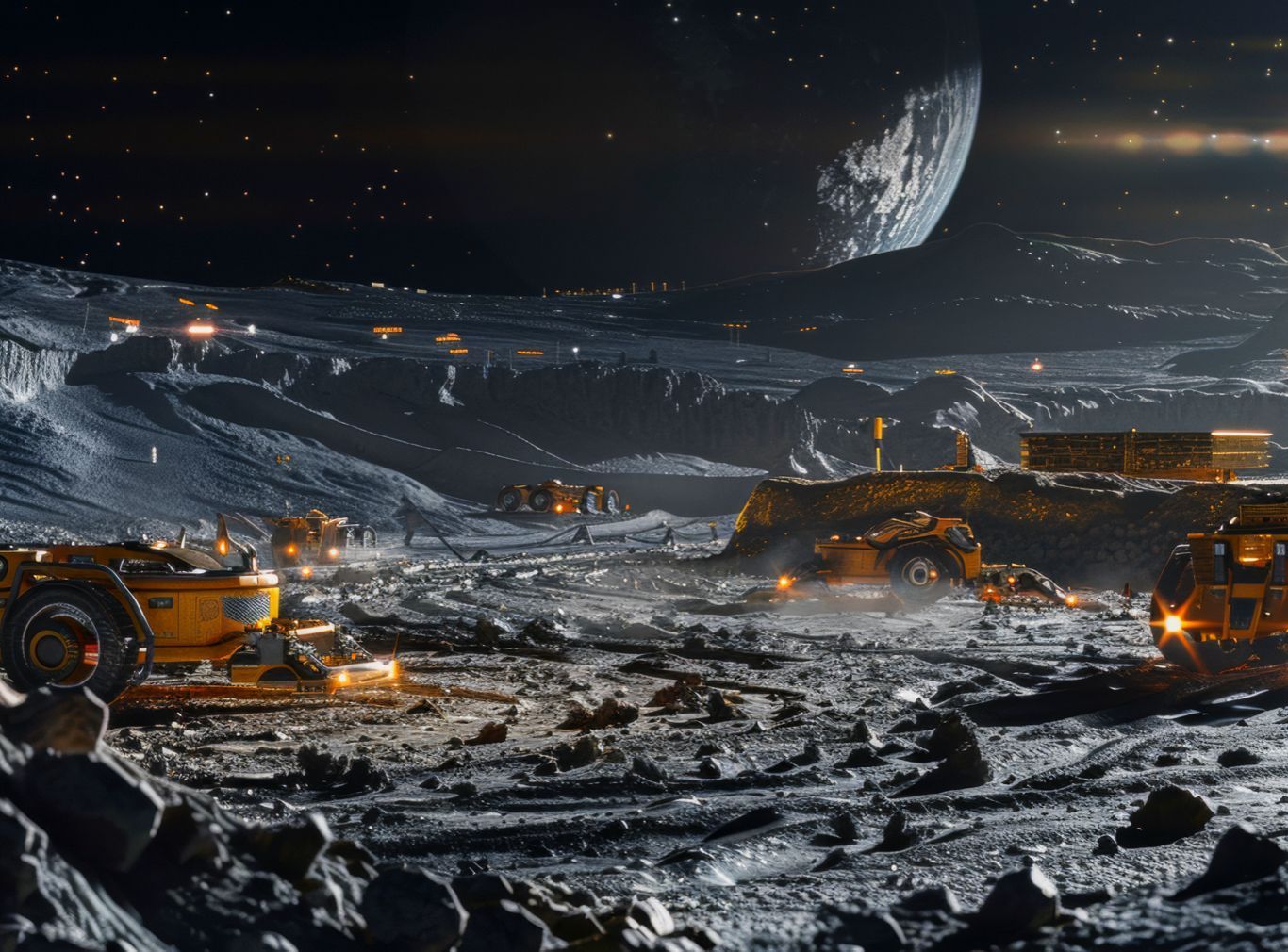
(Image: Adobe)
The use of lunar resources, applications for Earth, and the value in protecting Earth’s habitats
Ownership and utilisation of lunar resources are key drivers behind the new lunar race, influencing the development of new legal frameworks, international alliances, and rapid technological innovation. However, the true value of these resources must be questioned, considering the potential for heightened tensions and even conflict.
Lunar ice will be the first resource of utmost importance, to be used for producing water, oxygen, and rocket fuel. It is believed to exist in the permanently shadowed regions (PSRs) of the Moon. The next Intuitive Machines lunar mission will carry the NASA-funded Polar Resources Ice-Mining Experiment-1, which will be used to assess the water content of regolith at the lunar south pole. Furthermore, Astrobotic’s Griffin lander (originally scheduled to launch in Q4 this year) will transport NASA’s ice-hunting VIPER rover to the same region for a 100-day scouting mission.
Water and other resources will be used for a variety of applications. According to Prof Ian Crawford, professor of planetary science and astrobiology at Birkbeck, University of London, there are three possible uses for lunar resources; to facilitate extended exploration of the Moon (ISRU), to facilitate scientific and economic activity in the vicinity of both Earth and Moon (cislunar space), and “the importation of lunar resources to the Earth’s surface where they would contribute directly to the global economy,” (Crawford, 2015).
In his paper, “Lunar resources: A review”, Crawford discusses the presence of usable resources and their applications, saying that lunar exploration has shown that the Moon may contain “exploitable water reservoirs”, and also water trapped in hydrated regoliths. He also discusses the existence of metals, such as Iron and Aluminium, which will be “essential for constructing industrial and scientific on the Moon itself.”
The article furthermore discusses the presence of other resources, such as Silicon, which he aptly points out could be utilised for the in-situ manufacture of solar cells. Since the publication of the article Blue Origin have introduced their “Blue Alchemist” programme, a technology designed to melt lunar soil and extract almost pure silicon for solar cell production.
Crawford also discuses the use of lunar regolith for building materials, in order to develop infrastructure on the Moon. The European Space Agency (ESA) have recently demonstrated producing bricks using meteorite dust, exploring how construction materials might used in the lunar surface, and according to the South China Morning Post, the China National Space Administration (CNSA) are asking researchers to develop a device which can squeeze Moon soil into lunar bricks, and could be used as part of their Chang’e-8 mission.
Crawford’s article delves much deeper and looks into the practicality of extracting the resources, a geographic analysis of where they are located, and how they can be applied. A link to the article can be found below.

(Image: Adobe)
Exploring Helium-3 and REEs for terrestrial applications, and assessing the impact of space mining on Earth's ecosystems
Crawford’s article also discusses the presence of the widely discussed isotope, Helium-3, regarded by some as a potential answer to Earth’s growing energy consumption needs. Helium-3 is a possible fuel for future fusion reactors, and has been previously reported that two shuttle bay’s worth could power the United States for an entire year. This has brought about some excitement regarding the economic prospect of resource retrieval, including from commercial companies such as Qosmosys (Singapore) and Interlune (US).
However, Crawford says that claims about the abundance of Helium-3 on the Moon are false, and that in fact research shows that it only has parts per billion (ppm) concentrations. To put this into perspective, in order to produce all of Earth’s energy by the middle of the century, it would require processing 5000 km² per year, meaning it may not only be impractical, but also leading to reserves being exhausted within around only 200 years (Crawford, 2025).
In March this year, Qosmosys echoed this research, through analysis of the facts and the feasibility of extracting and retrieving Helium-3, concluding that at present the prospect of extracting substantial quantities is “more speculative than feasible.” US startup, Interlune, do however believe there are markets for Helium-3 other than for fusion energy, such as for medical imaging and supercomputing.
There’s also the case of the mining of rare earth elements (REEs) on the Moon. It is widely believed that REEs do exist on the Moon, with the Apollo samples showing “enhanced levels” of them (Crawford et al, 2015). These valuable elements are used in the manufacture of hi-tech products such as batteries, cell phones and cars. In a US house discussion last year regarding the value of space mining, Rep Paul Gosar said that it is “more and more a necessity,” referring to the demand for minerals like rare earth metals and current reliance on China for them, proving the geopolitical motivation behind securing space resources.
However, Crawford again questions the economic viability of extracting REEs from the Moon, stating that “Earth itself has abundant REE deposits”, unless the environmental costs of extracting them on Earth becomes prohibitive. Here we believe lies a perhaps undervalued argument. Should economic value of damaged Earth habitats be placed on the cost of extracting these resources, then off-world mining of them could become much more viable. These considerations arise at a time when sustainability measures are increasingly prominent on the global stage, with initiatives like the UN 2030 Agenda and Sustainable Development Goals (SDGs) are trying to gain momentum.
—————
Space applications such as Earth Observation (EO), navigation and connectivity are outlined as some of the key supporting technologies used to help achieve the UN SDGs, to better understand climate change, distorter management and much more. It may be also the case, perhaps in in an extended timeframe, that space could also relieve some of the physical pressures on our planet and become one of the economic drivers behind space mining endeavours. In the meantime, it is vital that government, agencies and industry leaders remain dedicated to building equitable, sustainable and peaceful regularity frameworks in order to allow for such outcomes to ever happen.
Define Our Future
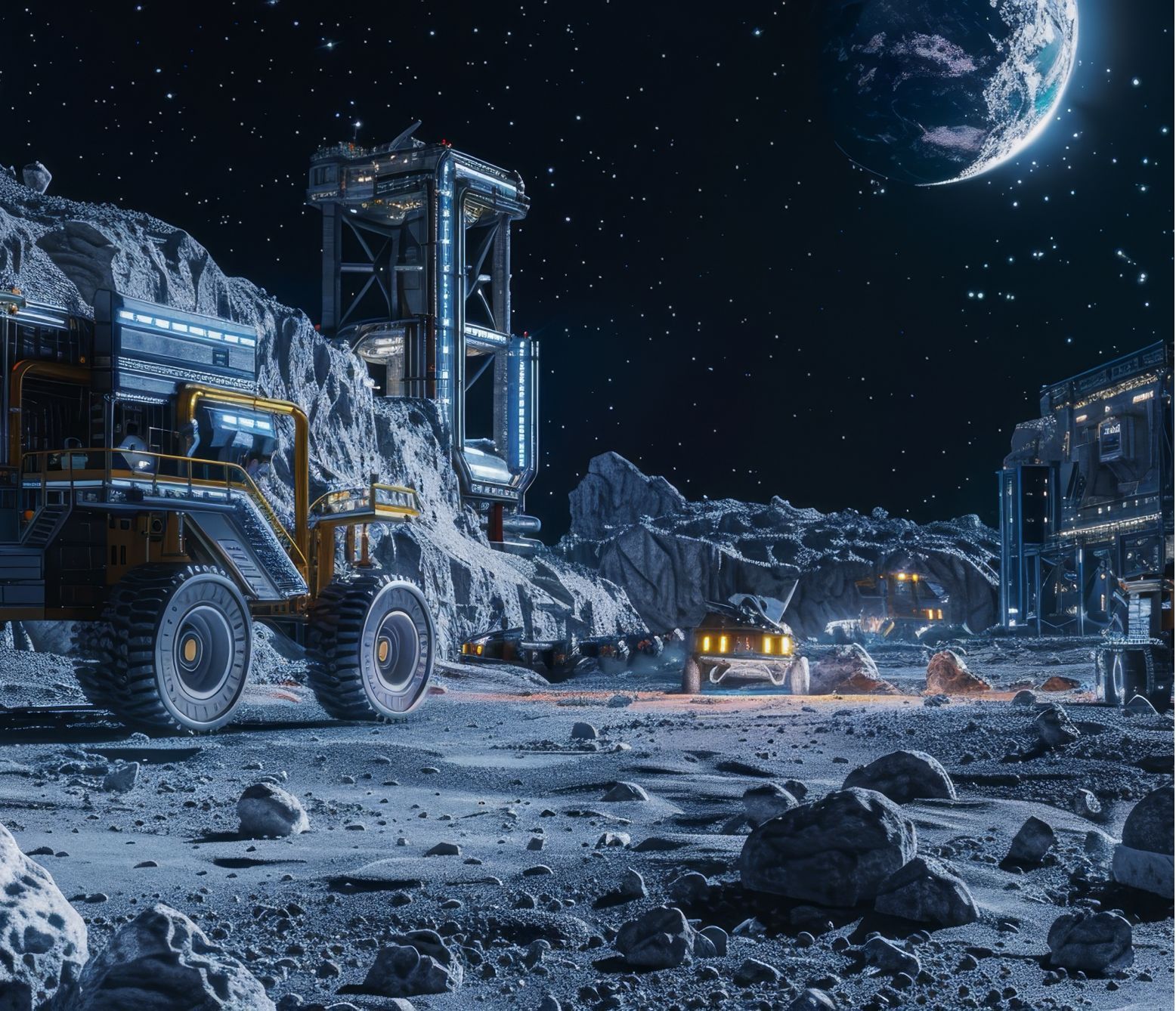
(Image: Adobe)
28 June 2024
Chang’e-6 Returns Far-Side Lunar Samples, Implications for Lunar Resource Utilisation and the Economic Value of Protecting Earth's Habitats - Special Edition

On June 25th China’s Chang’e-6 mission successfully delivered lunar samples from the far-side of the Moon for the first time. The re-entry capsule landed in inner Mongolia, carrying around 2 kilos of lunar material, marking the end of a 53-day mission involving four spacecraft; an orbiter, lander, ascent vehicle and reentry capsule. According to Long Xiao, a Planetary geoscientist for China University of Geosciences in Wuhan, the samples are “crucial for revealing the moon’s geological history.”
With this mission, China has further solidified its leading role in lunar exploration and demonstrated its cooperative leadership in space, collaborating with partners from France, the European Space Agency (ESA), and Pakistan.
The mission will be followed by Chang’e-7 and 8 (in 2026 and 2028 respectively), with the latter being used to explore in-situ resource utilisation technologies (ISRU), an essential tool for building their anticipated International Lunar Research Station (ILRS). In previous articles we have discussed the ambiguity of current international law, namely the OST, which states that the Moon is a “common heritage” of humankind, but does not explicitly outline policy for the use and ownership of these resources.
This is becoming an increasingly contentious matter, with a growing cadence of lunar missions, the commercialisation of lunar exploration, and most worryingly, the dawn of a new space race. In response to China’s successful sample return mission this week, the NASA chief insisted that the U.S. is on track to return astronauts to the Moon before China. Simultaneously, an article in the Wall Street Journal claims that China has moved "ahead in the space race with the U.S."
Furthermore, reports of falsified claims emerged on social media. Users on the Chinese platform Weibo compared images of a Chinese flag on the Chang’e mission with a photo of NASA astronaut Harrison H. Schmitt standing next to a U.S. flag on the lunar surface in 1972. They incorrectly claimed that the U.S. landing must have been staged, citing the appearance of the American flag blowing in the wind. Although these claims have been debunked, they highlight the increasing rivalry and tensions in the new Moon race.
While this growing competition shares some values with the original space race, such as maintaining national prestige and leadership in space, it also represents a new objective: securing territory and valuable resources on the Moon. This pursuit raises familiar and historic concerns. An article from the Lowy Institute aptly summarises this, stating that "this new Moon race may lead to military competition and potentially to conflict, given that human history is rife with competition over resources leading to war.”
We await the outcomes of the recent meetings of the UN Committee on the Peaceful Uses of Outer Space regarding the development of new frameworks aimed at preventing such scenarios.
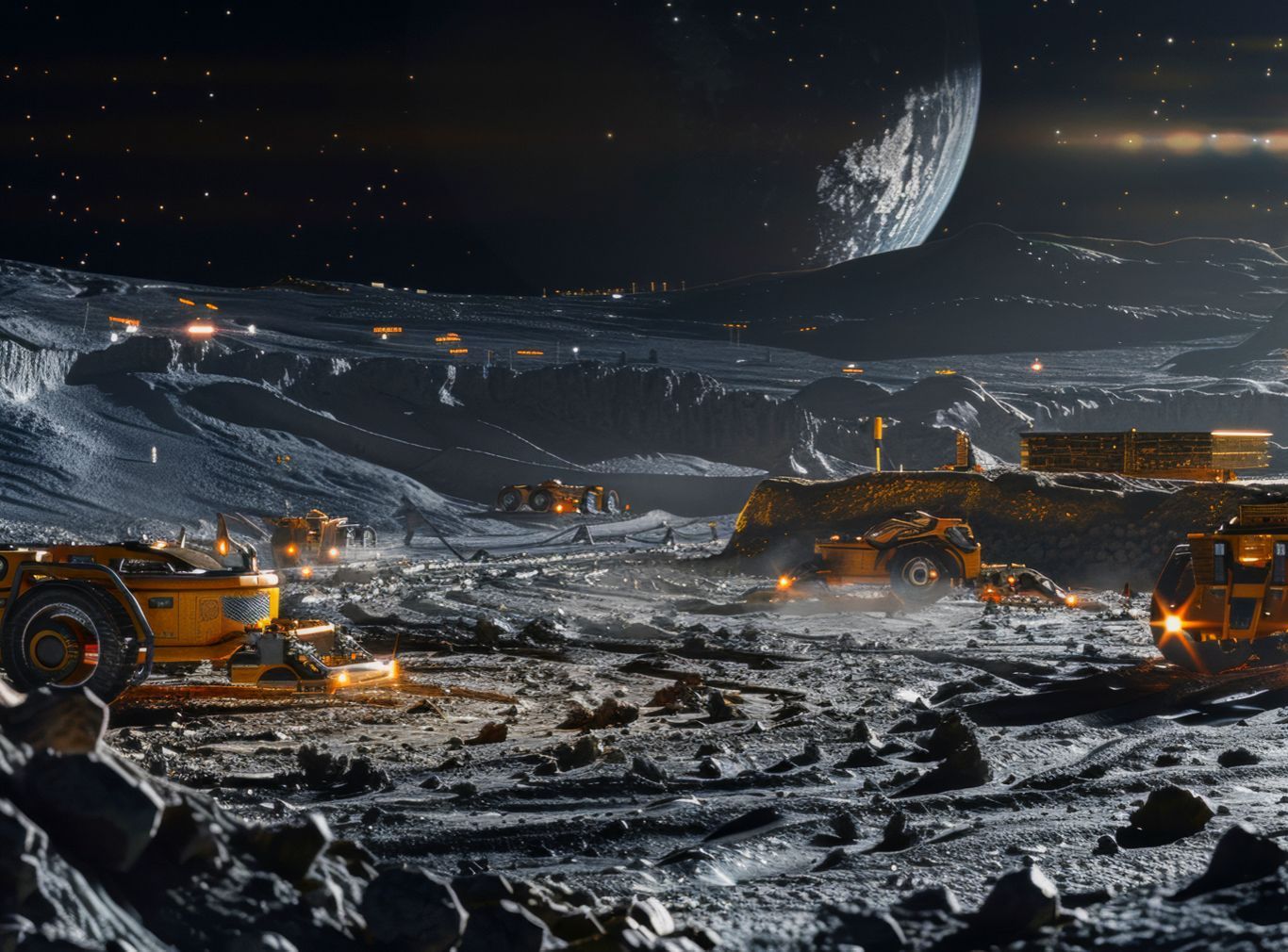
(Image: Adobe)
The use of lunar resources, applications for Earth, and the value in protecting Earth’s habitats
Ownership and utilisation of lunar resources are key drivers behind the new lunar race, influencing the development of new legal frameworks, international alliances, and rapid technological innovation. However, the true value of these resources must be questioned, considering the potential for heightened tensions and even conflict.
Lunar ice will be the first resource of utmost importance, to be used for producing water, oxygen, and rocket fuel. It is believed to exist in the permanently shadowed regions (PSRs) of the Moon. The next Intuitive Machines lunar mission will carry the NASA-funded Polar Resources Ice-Mining Experiment-1, which will be used to assess the water content of regolith at the lunar south pole. Furthermore, Astrobotic’s Griffin lander (originally scheduled to launch in Q4 this year) will transport NASA’s ice-hunting VIPER rover to the same region for a 100-day scouting mission.
Water and other resources will be used for a variety of applications. According to Prof Ian Crawford, professor of planetary science and astrobiology at Birkbeck, University of London, there are three possible uses for lunar resources; to facilitate extended exploration of the Moon (ISRU), to facilitate scientific and economic activity in the vicinity of both Earth and Moon (cislunar space), and “the importation of lunar resources to the Earth’s surface where they would contribute directly to the global economy,” (Crawford, 2015).
In his paper, “Lunar resources: A review”, Crawford discusses the presence of usable resources and their applications, saying that lunar exploration has shown that the Moon may contain “exploitable water reservoirs”, and also water trapped in hydrated regoliths. He also discusses the existence of metals, such as Iron and Aluminium, which will be “essential for constructing industrial and scientific on the Moon itself.”
The article furthermore discusses the presence of other resources, such as Silicon, which he aptly points out could be utilised for the in-situ manufacture of solar cells. Since the publication of the article Blue Origin have introduced their “Blue Alchemist” programme, a technology designed to melt lunar soil and extract almost pure silicon for solar cell production.
Crawford also discuses the use of lunar regolith for building materials, in order to develop infrastructure on the Moon. The European Space Agency (ESA) have recently demonstrated producing bricks using meteorite dust, exploring how construction materials might used in the lunar surface, and according to the South China Morning Post, the China National Space Administration (CNSA) are asking researchers to develop a device which can squeeze Moon soil into lunar bricks, and could be used as part of their Chang’e-8 mission.
Crawford’s article delves much deeper and looks into the practicality of extracting the resources, a geographic analysis of where they are located, and how they can be applied. A link to the article can be found below.
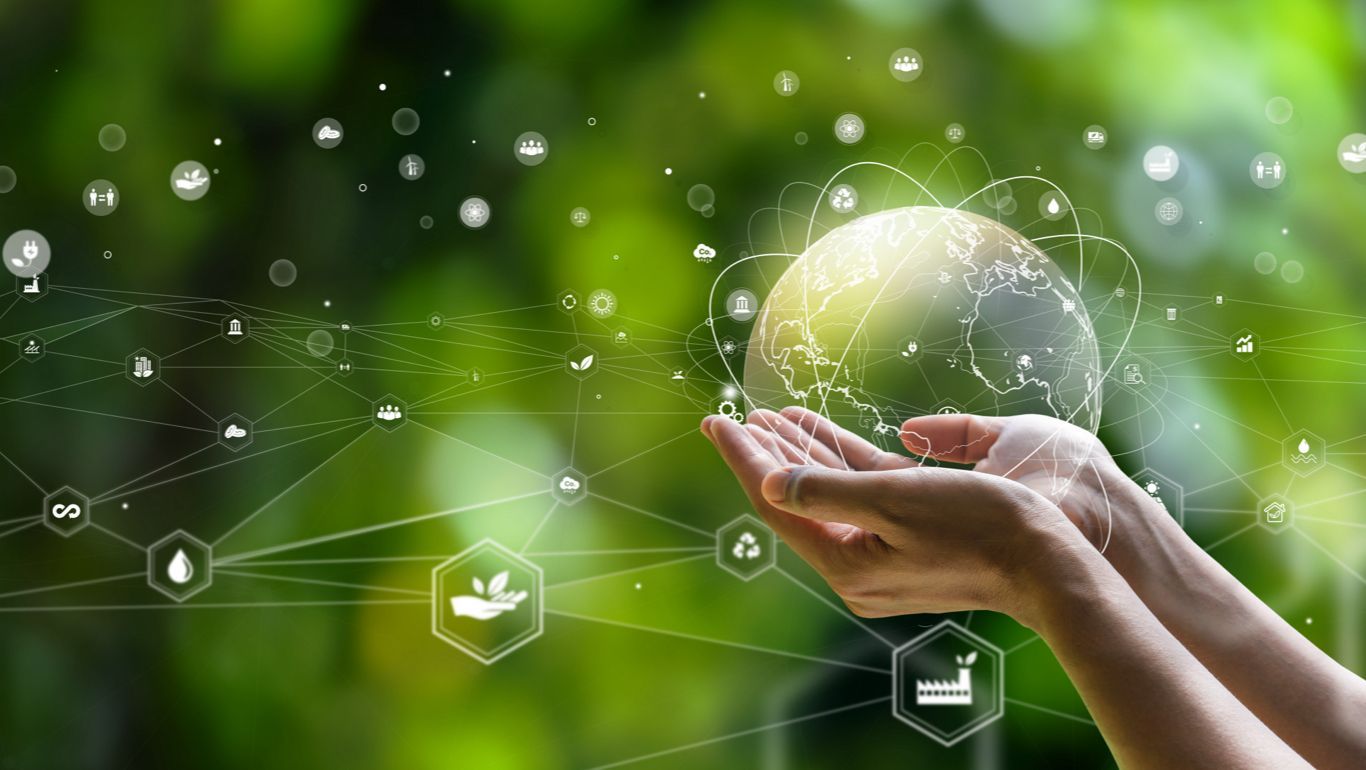
(Image: Adobe)
Exploring Helium-3 and REEs for terrestrial applications, and assessing the impact of space mining on Earth's ecosystems
Crawford’s article also discusses the presence of the widely discussed isotope, Helium-3, regarded by some as a potential answer to Earth’s growing energy consumption needs. Helium-3 is a possible fuel for future fusion reactors, and has been previously reported that two shuttle bay’s worth could power the United States for an entire year. This has brought about some excitement regarding the economic prospect of resource retrieval, including from commercial companies such as Qosmosys (Singapore) and Interlune (US).
However, Crawford says that claims about the abundance of Helium-3 on the Moon are false, and that in fact research shows that it only has parts per billion (ppm) concentrations. To put this into perspective, in order to produce all of Earth’s energy by the middle of the century, it would require processing 5000 km² per year, meaning it may not only be impractical, but also leading to reserves being exhausted within around only 200 years (Crawford, 2025).
In March this year, Qosmosys echoed this research, through analysis of the facts and the feasibility of extracting and retrieving Helium-3, concluding that at present the prospect of extracting substantial quantities is “more speculative than feasible.” US startup, Interlune, do however believe there are markets for Helium-3 other than for fusion energy, such as for medical imaging and supercomputing.
There’s also the case of the mining of rare earth elements (REEs) on the Moon. It is widely believed that REEs do exist on the Moon, with the Apollo samples showing “enhanced levels” of them (Crawford et al, 2015). These valuable elements are used in the manufacture of hi-tech products such as batteries, cell phones and cars. In a US house discussion last year regarding the value of space mining, Rep Paul Gosar said that it is “more and more a necessity,” referring to the demand for minerals like rare earth metals and current reliance on China for them, proving the geopolitical motivation behind securing space resources.
However, Crawford again questions the economic viability of extracting REEs from the Moon, stating that “Earth itself has abundant REE deposits”, unless the environmental costs of extracting them on Earth becomes prohibitive. Here we believe lies a perhaps undervalued argument. Should economic value of damaged Earth habitats be placed on the cost of extracting these resources, then off-world mining of them could become much more viable. These considerations arise at a time when sustainability measures are increasingly prominent on the global stage, with initiatives like the UN 2030 Agenda and Sustainable Development Goals (SDGs) are trying to gain momentum.
—————
Space applications such as Earth Observation (EO), navigation and connectivity are outlined as some of the key supporting technologies used to help achieve the UN SDGs, to better understand climate change, distorter management and much more. It may be also the case, perhaps in in an extended timeframe, that space could also relieve some of the physical pressures on our planet and become one of the economic drivers behind space mining endeavours. In the meantime, it is vital that government, agencies and industry leaders remain dedicated to building equitable, sustainable and peaceful regularity frameworks in order to allow for such outcomes to ever happen.
Share this article
28 June 2024
Chang’e-6 Returns Far-Side Lunar Samples, Implications for Lunar Resource Utilisation and the Economic Value of Protecting Earth's Habitats - Special Edition

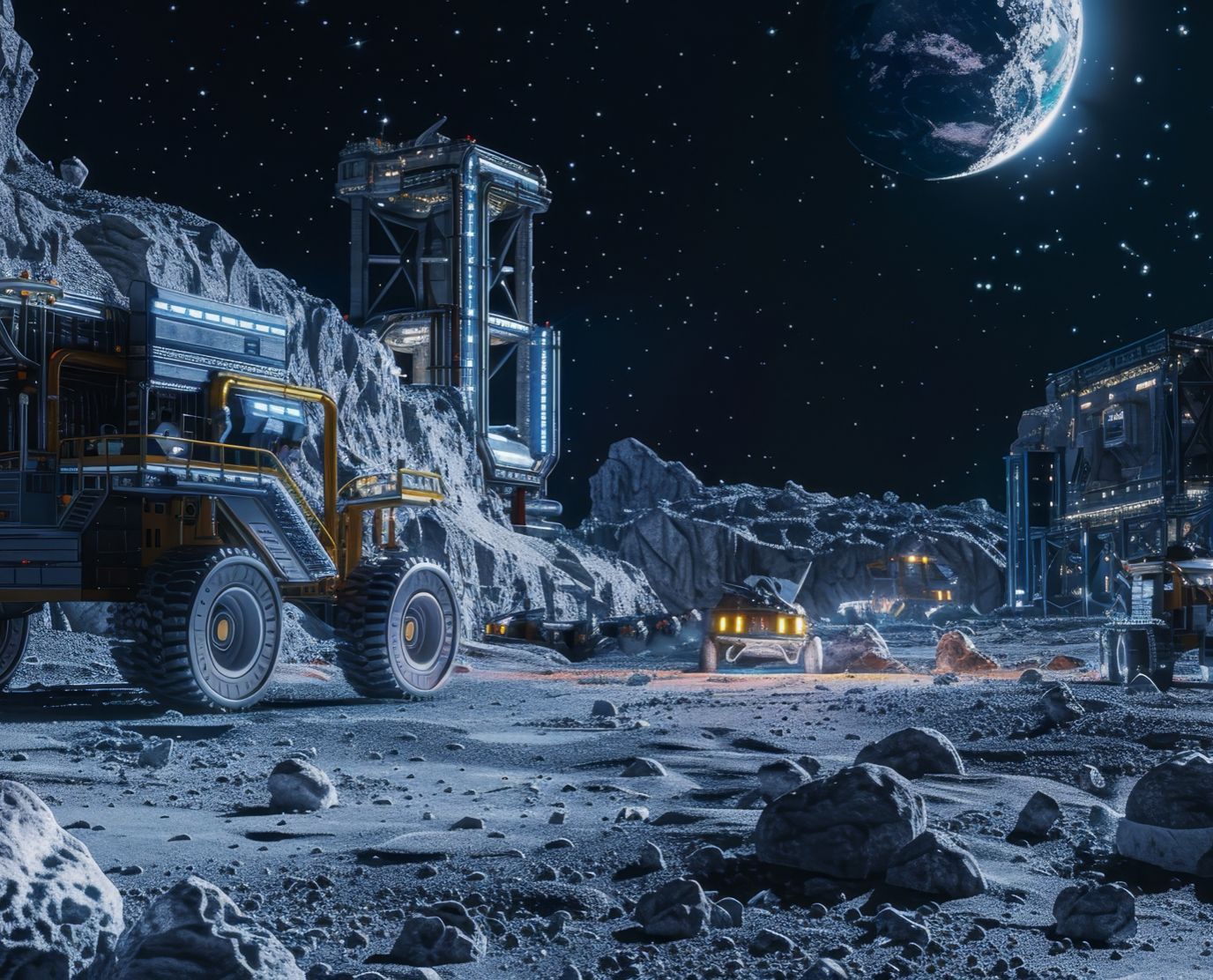
(Image: Adobe)
On June 25th China’s Chang’e-6 mission successfully delivered lunar samples from the far-side of the Moon for the first time. The re-entry capsule landed in inner Mongolia, carrying around 2 kilos of lunar material, marking the end of a 53-day mission involving four spacecraft; an orbiter, lander, ascent vehicle and reentry capsule. According to Long Xiao, a Planetary geoscientist for China University of Geosciences in Wuhan, the samples are “crucial for revealing the moon’s geological history.”
With this mission, China has further solidified its leading role in lunar exploration and demonstrated its cooperative leadership in space, collaborating with partners from France, the European Space Agency (ESA), and Pakistan.
The mission will be followed by Chang’e-7 and 8 (in 2026 and 2028 respectively), with the latter being used to explore in-situ resource utilisation technologies (ISRU), an essential tool for building their anticipated International Lunar Research Station (ILRS). In previous articles we have discussed the ambiguity of current international law, namely the OST, which states that the Moon is a “common heritage” of humankind, but does not explicitly outline policy for the use and ownership of these resources.
This is becoming an increasingly contentious matter, with a growing cadence of lunar missions, the commercialisation of lunar exploration, and most worryingly, the dawn of a new space race. In response to China’s successful sample return mission this week, the NASA chief insisted that the U.S. is on track to return astronauts to the Moon before China. Simultaneously, an article in the Wall Street Journal claims that China has moved "ahead in the space race with the U.S."
Furthermore, reports of falsified claims emerged on social media. Users on the Chinese platform Weibo compared images of a Chinese flag on the Chang’e mission with a photo of NASA astronaut Harrison H. Schmitt standing next to a U.S. flag on the lunar surface in 1972. They incorrectly claimed that the U.S. landing must have been staged, citing the appearance of the American flag blowing in the wind. Although these claims have been debunked, they highlight the increasing rivalry and tensions in the new Moon race.
While this growing competition shares some values with the original space race, such as maintaining national prestige and leadership in space, it also represents a new objective: securing territory and valuable resources on the Moon. This pursuit raises familiar and historic concerns. An article from the Lowy Institute aptly summarises this, stating that "this new Moon race may lead to military competition and potentially to conflict, given that human history is rife with competition over resources leading to war.”
We await the outcomes of the recent meetings of the UN Committee on the Peaceful Uses of Outer Space regarding the development of new frameworks aimed at preventing such scenarios.
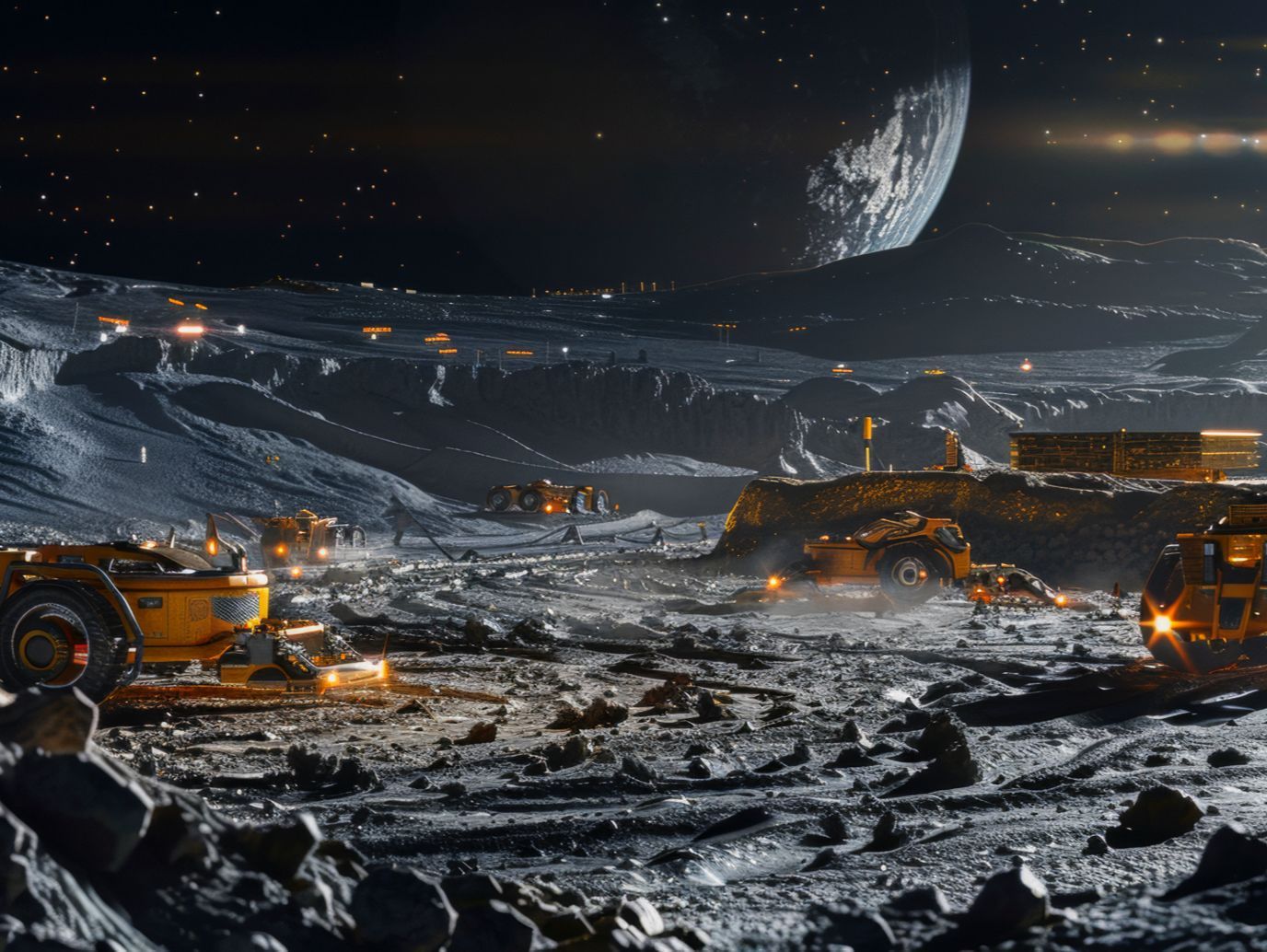
(Image: Adobe)
The use of lunar resources, applications for Earth, and the value in protecting Earth’s habitats
Ownership and utilisation of lunar resources are key drivers behind the new lunar race, influencing the development of new legal frameworks, international alliances, and rapid technological innovation. However, the true value of these resources must be questioned, considering the potential for heightened tensions and even conflict.
Lunar ice will be the first resource of utmost importance, to be used for producing water, oxygen, and rocket fuel. It is believed to exist in the permanently shadowed regions (PSRs) of the Moon. The next Intuitive Machines lunar mission will carry the NASA-funded Polar Resources Ice-Mining Experiment-1, which will be used to assess the water content of regolith at the lunar south pole. Furthermore, Astrobotic’s Griffin lander (originally scheduled to launch in Q4 this year) will transport NASA’s ice-hunting VIPER rover to the same region for a 100-day scouting mission.
Water and other resources will be used for a variety of applications. According to Prof Ian Crawford, professor of planetary science and astrobiology at Birkbeck, University of London, there are three possible uses for lunar resources; to facilitate extended exploration of the Moon (ISRU), to facilitate scientific and economic activity in the vicinity of both Earth and Moon (cislunar space), and “the importation of lunar resources to the Earth’s surface where they would contribute directly to the global economy,” (Crawford, 2015).
In his paper, “Lunar resources: A review”, Crawford discusses the presence of usable resources and their applications, saying that lunar exploration has shown that the Moon may contain “exploitable water reservoirs”, and also water trapped in hydrated regoliths. He also discusses the existence of metals, such as Iron and Aluminium, which will be “essential for constructing industrial and scientific on the Moon itself.”
The article furthermore discusses the presence of other resources, such as Silicon, which he aptly points out could be utilised for the in-situ manufacture of solar cells. Since the publication of the article Blue Origin have introduced their “Blue Alchemist” programme, a technology designed to melt lunar soil and extract almost pure silicon for solar cell production.
Crawford also discuses the use of lunar regolith for building materials, in order to develop infrastructure on the Moon. The European Space Agency (ESA) have recently demonstrated producing bricks using meteorite dust, exploring how construction materials might used in the lunar surface, and according to the South China Morning Post, the China National Space Administration (CNSA) are asking researchers to develop a device which can squeeze Moon soil into lunar bricks, and could be used as part of their Chang’e-8 mission.
Crawford’s article delves much deeper and looks into the practicality of extracting the resources, a geographic analysis of where they are located, and how they can be applied. A link to the article can be found below.
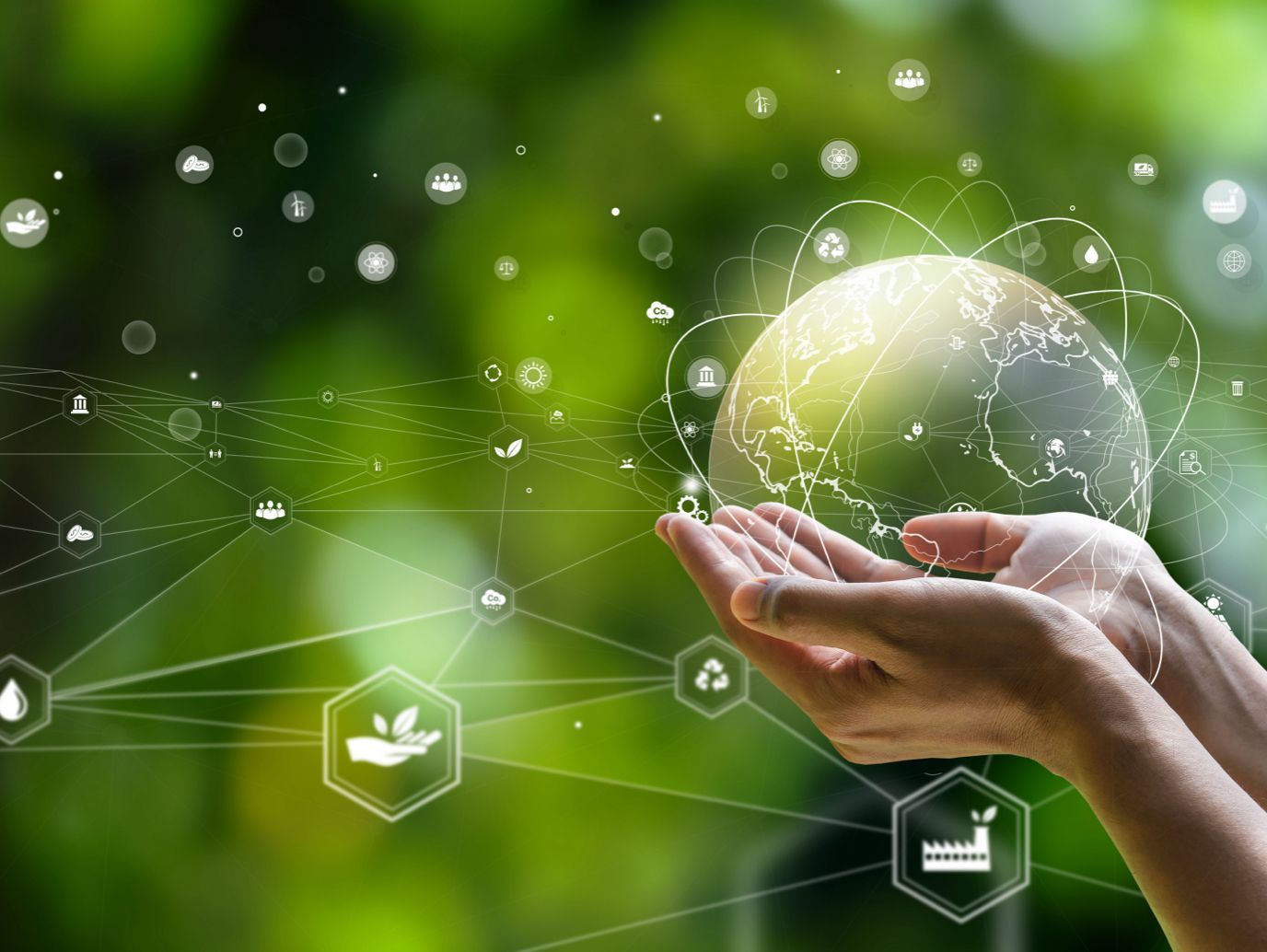
(Image: Adobe)
Exploring Helium-3 and REEs for terrestrial applications, and assessing the impact of space mining on Earth's ecosystems
Crawford’s article also discusses the presence of the widely discussed isotope, Helium-3, regarded by some as a potential answer to Earth’s growing energy consumption needs. Helium-3 is a possible fuel for future fusion reactors, and has been previously reported that two shuttle bay’s worth could power the United States for an entire year. This has brought about some excitement regarding the economic prospect of resource retrieval, including from commercial companies such as Qosmosys (Singapore) and Interlune (US).
However, Crawford says that claims about the abundance of Helium-3 on the Moon are false, and that in fact research shows that it only has parts per billion (ppm) concentrations. To put this into perspective, in order to produce all of Earth’s energy by the middle of the century, it would require processing 5000 km² per year, meaning it may not only be impractical, but also leading to reserves being exhausted within around only 200 years (Crawford, 2025).
In March this year, Qosmosys echoed this research, through analysis of the facts and the feasibility of extracting and retrieving Helium-3, concluding that at present the prospect of extracting substantial quantities is “more speculative than feasible.” US startup, Interlune, do however believe there are markets for Helium-3 other than for fusion energy, such as for medical imaging and supercomputing.
There’s also the case of the mining of rare earth elements (REEs) on the Moon. It is widely believed that REEs do exist on the Moon, with the Apollo samples showing “enhanced levels” of them (Crawford et al, 2015). These valuable elements are used in the manufacture of hi-tech products such as batteries, cell phones and cars. In a US house discussion last year regarding the value of space mining, Rep Paul Gosar said that it is “more and more a necessity,” referring to the demand for minerals like rare earth metals and current reliance on China for them, proving the geopolitical motivation behind securing space resources.
However, Crawford again questions the economic viability of extracting REEs from the Moon, stating that “Earth itself has abundant REE deposits”, unless the environmental costs of extracting them on Earth becomes prohibitive. Here we believe lies a perhaps undervalued argument. Should economic value of damaged Earth habitats be placed on the cost of extracting these resources, then off-world mining of them could become much more viable. These considerations arise at a time when sustainability measures are increasingly prominent on the global stage, with initiatives like the UN 2030 Agenda and Sustainable Development Goals (SDGs) are trying to gain momentum.
—————
Space applications such as Earth Observation (EO), navigation and connectivity are outlined as some of the key supporting technologies used to help achieve the UN SDGs, to better understand climate change, distorter management and much more. It may be also the case, perhaps in in an extended timeframe, that space could also relieve some of the physical pressures on our planet and become one of the economic drivers behind space mining endeavours. In the meantime, it is vital that government, agencies and industry leaders remain dedicated to building equitable, sustainable and peaceful regularity frameworks in order to allow for such outcomes to ever happen.
Share this article

